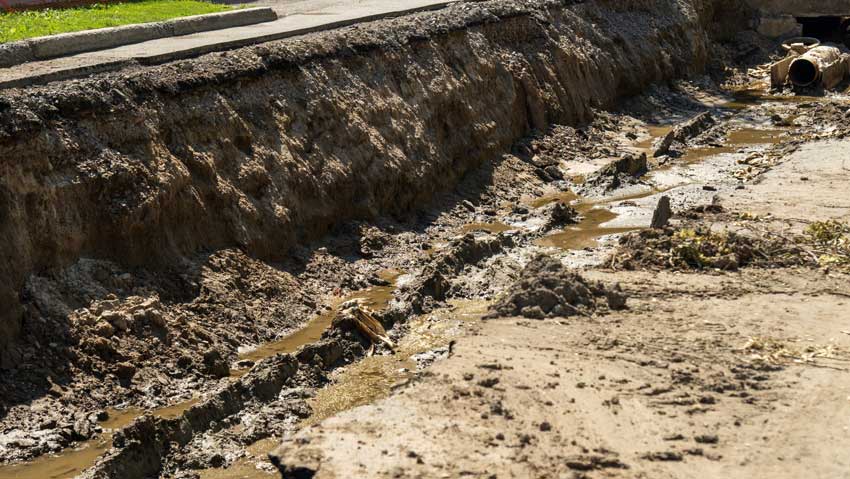
Excavation plays a vital role in creating sustainable drainage solutions that help manage stormwater, reduce erosion, and protect the environment. As climate patterns shift and urban development expands, the need for effective and eco-friendly drainage systems becomes increasingly important. Strategic excavation enables the installation of systems that not only handle water runoff but also support long-term sustainability.
Bioswales
One of the most common sustainable drainage applications involving excavation is the construction of bioswales and rain gardens. These features require precise excavation to shape shallow, sloped channels or depressions in the landscape that collect and filter runoff. During rainfall, water flows into these excavated areas where it slowly infiltrates the ground, allowing soil and vegetation to naturally filter out pollutants. This helps recharge groundwater and reduces the burden on municipal stormwater systems.
Permeable pavers
Excavation is also essential for installing permeable pavers and infiltration trenches. In these cases, soil is removed to a specified depth to make way for layers of gravel, sand, or specialized drainage media. These excavated zones provide a space for water to flow into and be absorbed rather than running off hard surfaces. By reducing surface runoff, these solutions decrease the risk of flooding and soil erosion.
Retention basins
Another effective sustainable drainage application is the construction of detention or retention basins. Excavation allows for the creation of large basins that temporarily hold excess rainwater during storms. These basins either slowly release water back into the environment or allow it to infiltrate the ground naturally. This method helps control the volume and rate of stormwater discharge, reducing downstream erosion and protecting waterways from sediment and pollutant overload.
Grading
Sustainable drainage systems also benefit from grading and contouring done through excavation. Proper land shaping ensures that water flows in desired directions, avoiding problem areas such as building foundations or septic systems. Excavation professionals can sculpt the land to create gentle slopes and swales that guide water naturally and safely.
Have a solid plan
Incorporating excavation into sustainable drainage projects requires careful planning, soil analysis, and a commitment to environmental stewardship. When executed correctly, these methods enhance the land’s resilience, support biodiversity, and improve water quality.
Ultimately, excavation is more than just digging—it’s a foundational step in building smarter, greener drainage systems. By aligning earthwork with sustainability goals, property owners and developers can mitigate water-related issues while contributing to healthier ecosystems and more resilient communities.
